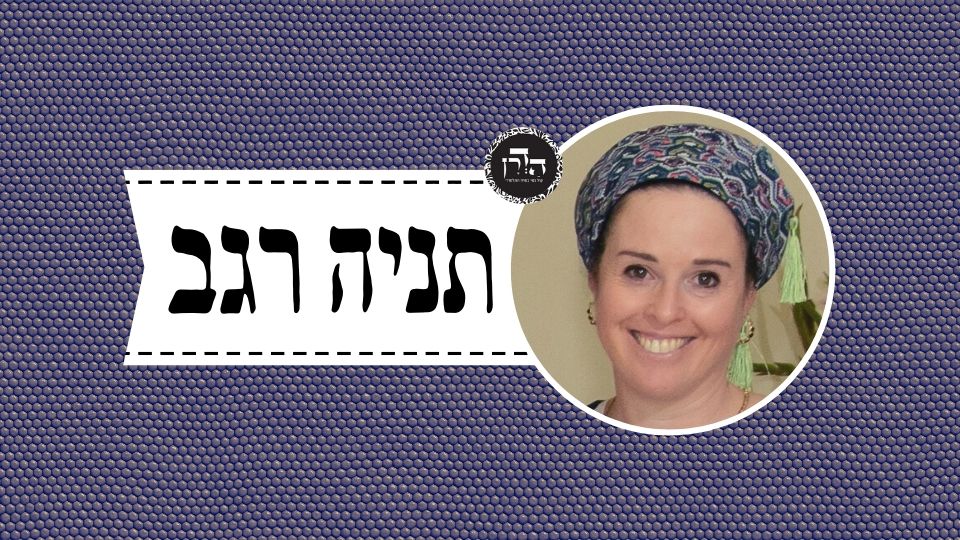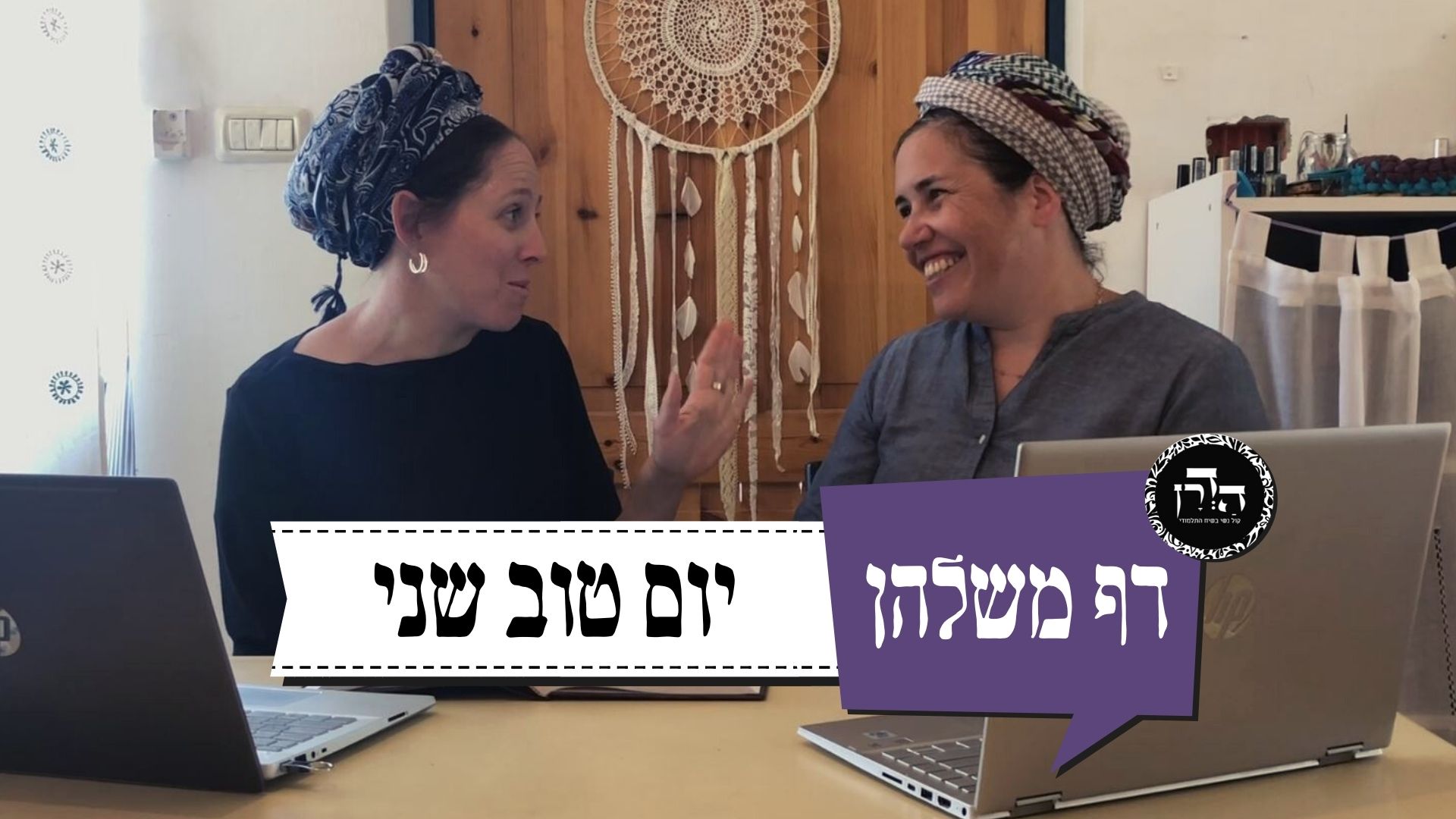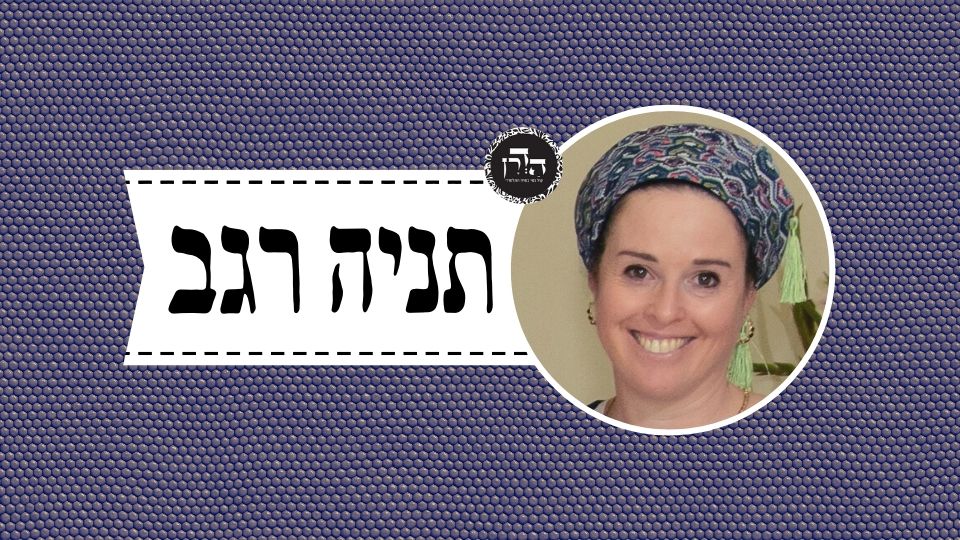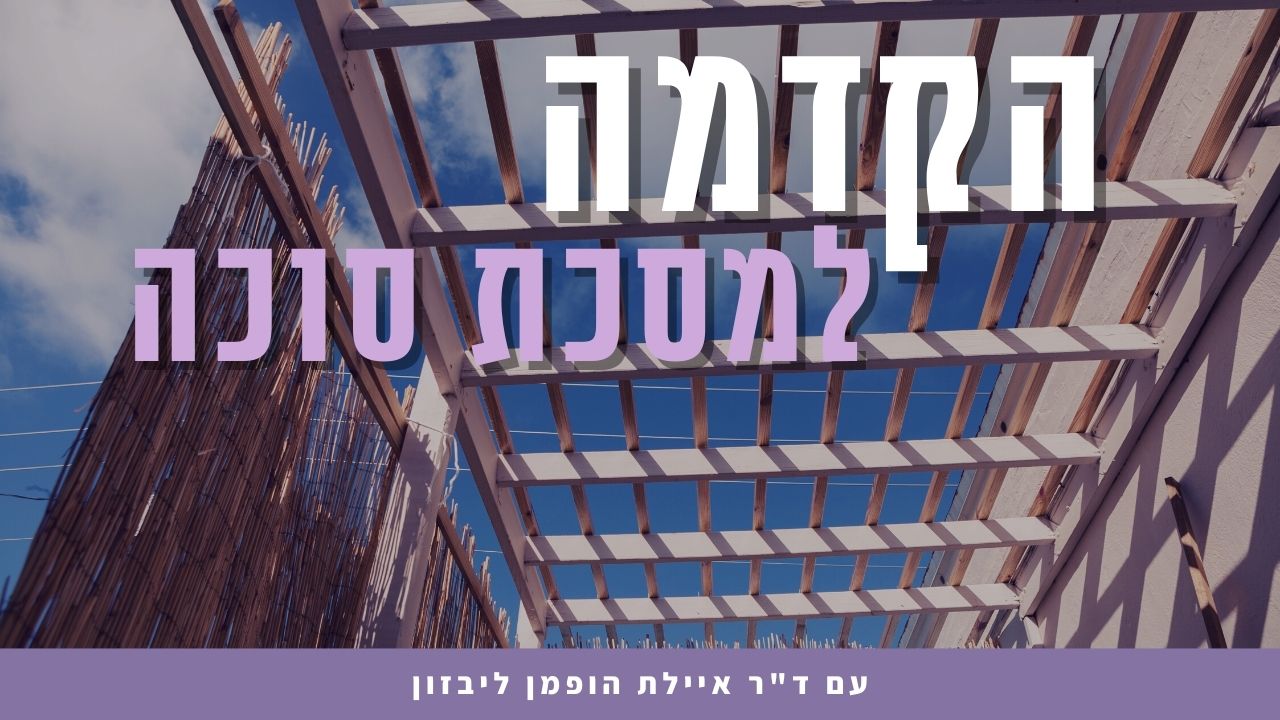סוכה טו
מַתְנִי׳ תִּקְרָה שֶׁאֵין עָלֶיהָ מַעֲזִיבָה, רַבִּי יְהוּדָה אוֹמֵר: בֵּית שַׁמַּאי אוֹמְרִים: מְפַקְפֵּק, וְנוֹטֵל אַחַת מִבֵּינְתַיִם. וּבֵית הִלֵּל אוֹמְרִים: מְפַקְפֵּק, אוֹ נוֹטֵל אַחַת מִבֵּינְתַיִם. רַבִּי מֵאִיר אוֹמֵר: נוֹטֵל אַחַת מִבֵּינְתַיִם, וְאֵינוֹ מְפַקְפֵּק.
MISHNA: In the case of a roof made of boards that are four handbreadths wide upon which there is no coat of plaster, Rabbi Yehuda says that Beit Shammai and Beit Hillel disagree with regard to the manner in which to render it fit. Beit Shammai say: One moves each board, and then it is considered as though he placed the board there for the sake of the mitzva of sukka, and one then removes one board from among the boards and replaces it with fit roofing. Beit Hillel say: One need not perform both actions; rather, one must either move the boards or remove one from among them. Rabbi Meir says: One only removes one from among them and does not move the others.
גְּמָ׳ בִּשְׁלָמָא בֵּית הִלֵּל, טַעְמַיְיהוּ מִשּׁוּם ״תַּעֲשֶׂה״ וְלֹא מִן הֶעָשׂוּי. אִי מְפַקְפֵּק, עָבֵיד לֵיהּ מַעֲשֶׂה. אִי נוֹטֵל אַחַת מִבֵּינְתַיִם, עָבֵד בַּהּ מַעֲשֶׂה. אֶלָּא בֵּית שַׁמַּאי, מַאי טַעְמַיְיהוּ? אִי מִשּׁוּם ״תַּעֲשֶׂה״ וְלֹא מִן הֶעָשׂוּי — בַּחֲדָא סַגִּי! אִי מִשּׁוּם גְּזֵרַת תִּקְרָה — בְּנוֹטֵל אַחַת מִבֵּינְתַיִם סַגִּי!
GEMARA: The Gemara asks: Granted, according to Beit Hillel, their reason for initially prohibiting this roof is due to the principle: Prepare it, and not from that which has already been prepared. If one moves the boards, he performs an action. Likewise, if he removes one of the boards from among them, he also performs an action. Therefore, in both cases, he prepared the roofing and the sukka is fit. However, with regard to the opinion of Beit Shammai, what is the rationale for their prohibition against using the original ceiling for a sukka? If the rationale is also due to the principle: Prepare it, and not from that which has already been prepared, one action should suffice. Or if the rationale is due to the decree of the roof, lest one come to reside beneath a regular plastered ceiling inside a house, removing one board from among them should suffice.
לְעוֹלָם מִשּׁוּם גְּזֵרַת תִּקְרָה, וְהָכִי קָאָמְרִי: אַף עַל פִּי שֶׁמְּפַקְפֵּק, אִי נוֹטֵל אַחַת מִבֵּינְתַיִם — אִין, אִי לָא — לָא.
The Gemara answers: Actually, the rationale is due to the decree of the roof, and this is what they are saying: Although one moves the boards, if he removes one board from among them, yes, it is fit; if not, no, it is unfit. Moving the boards is inconsequential. Removing one board from among them is all that is necessary.
אִי הָכִי, אֵימָא סֵיפָא: רַבִּי מֵאִיר אוֹמֵר: נוֹטֵל אַחַת מִבֵּינְתַיִם, אֲבָל לֹא יְפַקְפֵּק — רַבִּי מֵאִיר הַיְינוּ בֵּית שַׁמַּאי!
The Gemara asks: If so, say the latter clause of the mishna: Rabbi Meir says: One removes one from among them but does not move the others. This indicates that the opinion of Rabbi Meir is identical to the opinion of Beit Shammai, as according to the above explanation, Beit Shammai also hold that removing one of the boards and replacing it with fit roofing can render the sukka fit. It is unreasonable to say that Rabbi Meir would hold in accordance with the opinion of Beit Shammai, which is rejected.
הָכִי קָאָמַר: לֹא נֶחְלְקוּ בֵּית שַׁמַּאי וּבֵית הִלֵּל בְּדָבָר זֶה.
The Gemara answers: This is what Rabbi Meir is saying: Beit Shammai and Beit Hillel do not disagree on this matter. They agree that the boards are prohibited due to the decree of the roof and that only by removing one of the boards is the sukka rendered fit. Rabbi Meir disagrees with the opinion of Rabbi Yehuda that there is a dispute between Beit Shammai and Beit Hillel.
מַאי קָא מַשְׁמַע לַן? דְּרַבִּי מֵאִיר אִית לֵיהּ גְּזֵרַת תִּקְרָה, וְרַבִּי יְהוּדָה לֵית לֵיהּ גְּזֵרַת תִּקְרָה — וְהָא אִפְּלִיגוּ בַּהּ חֲדָא זִימְנָא! דִּתְנַן: מְסַכְּכִין בִּנְסָרִים, דִּבְרֵי רַבִּי יְהוּדָה. וְרַבִּי מֵאִיר אוֹסֵר.
The Gemara asks: What is the tanna of the mishna teaching us? Is it that Rabbi Meir is of the opinion that the Sages issued the decree of the roof and Rabbi Yehuda is of the opinion that the Sages did not issue the decree of the roof? But didn’t they disagree about this once, as we learned in the mishna above: One may roof the sukka with boards; this is the statement of Rabbi Yehuda. Rabbi Meir prohibits their use. The Gemara explained that the dispute is whether or not the Sages issued the decree of the roof.
אָמַר רַבִּי חִיָּיא בַּר אַבָּא אָמַר רַבִּי יוֹחָנָן: רֵישָׁא — בִּנְסָרִים מְשׁוּפִּין עָסְקִינַן, וּמִשּׁוּם גְּזֵרַת כֵּלִים נָגְעוּ בָּהּ.
Rabbi Ḥiyya bar Abba said that Rabbi Yoḥanan said: That is not the dispute, as in the first clause, i.e., in the earlier mishna, we are dealing with the case of planed boards. The rationale for their disagreement is not due to the decree of the roof; but it is due to the decree of the vessels that they touched upon it. The dispute is whether or not the Sages issued a decree prohibiting the use of planed beams in roofing the sukka, although as flat wooden vessels they are not susceptible to ritual impurity, lest one come to roof the sukka with vessels that are susceptible to ritual impurity.
וּלְרַב יְהוּדָה אָמַר רַב, דְּאָמַר: סִכְּכָהּ בְּחִיצִּין זְכָרִים — כְּשֵׁרָה. בִּנְקֵבוֹת — פְּסוּלָה, וְלָא גָּזַר זְכָרִים אַטּוּ נְקֵבוֹת. הָכָא נָמֵי לָא נִגְזַר נְסָרִים מְשׁוּפִּין אַטּוּ כֵּלִים!
The Gemara asks: And according to Rav Yehuda, who said that Rav said: If one roofed a sukka with convex arrow shafts, the sukka is fit, but if he roofed his sukka with concave arrow shafts, the sukka is unfit; and he did not issue a decree and prohibit roofing with convex shafts due to the prohibition against roofing with concave shafts, here too, let us not issue a decree and prohibit roofing with planed boards, due to the prohibition against roofing with actual vessels.
אֶלָּא עַל כׇּרְחָךְ רֵישָׁא פְּלִיגִי בִּגְזֵרַת תִּקְרָה, וְסֵיפָא פְּלִיגִי בִּגְזֵרַת תִּקְרָה. וְאִפְּלוֹגֵי בְּתַרְתֵּי זִימְנֵי לְמָה לִי?
Rather, according to Rav, perforce you must say that in the first clause of the mishna they disagree with regard to the decree of the roof, and in the latter clause, i.e., this mishna as well, they disagree with regard to the decree of the roof. Once again, the question arises: Why do I need them to disagree about the same issue twice?
סֵיפָא רַבִּי יְהוּדָה (הִיא), דְּקָא אֲמַר לֵיהּ לְרַבִּי מֵאִיר: אַמַּאי קָא אָסְרַתְּ בִּנְסָרִים — מִשּׁוּם גְּזֵרַת תִּקְרָה? הַאי סְבָרָא לְבֵית שַׁמַּאי הוּא דְּאִית לְהוּ, וּבֵית הִלֵּל לָא גָּזְרִי! וְאָמַר רַבִּי מֵאִיר: לֹא נֶחְלְקוּ בֵּית שַׁמַּאי וּבֵית הִלֵּל בְּדָבָר זֶה.
The Gemara answers: Rather, the latter clause is the opinion of Rabbi Yehuda, who is saying to Rabbi Meir: Why do you prohibit roofing with boards? Is it due to the decree of the roof? That is the reason according to Beit Shammai, who are of the opinion that the Sages issued the decree. But, contrary to your opinion, Beit Hillel do not issue the decree. And Rabbi Meir said to Rabbi Yehuda: Beit Shammai and Beit Hillel did not disagree with regard to this matter at all. These are not two separate disputes; rather, it is one extended dispute.
הָנִיחָא לְרַב, דְּאָמַר מַחְלוֹקֶת בְּשֶׁיֵּשׁ בָּהֶן אַרְבָּעָה, דְּרַבִּי מֵאִיר אִית לֵיהּ גְּזֵרַת תִּקְרָה וְרַבִּי יְהוּדָה לֵית לֵיהּ גְּזֵרַת תִּקְרָה. אֶלָּא שְׁמוּאֵל, דְּאָמַר בְּשֶׁאֵין בָּהֶן אַרְבָּעָה מַחְלוֹקֶת, אֲבָל יֵשׁ בָּהֶן אַרְבָּעָה — דִּבְרֵי הַכֹּל פְּסוּלָה, סֵיפָא בְּמַאי פְּלִיגִי?
The Gemara continues to ask: This works out well according to Rav, who said that the dispute is specifically in a case where the boards have four handbreadths in their width. He says that Rabbi Meir is of the opinion that the Sages issued the decree of the roof, and Rabbi Yehuda is not of the opinion that the Sages issued the decree of the roof. However, according to Shmuel, who said that the dispute is specifically in a case where the boards do not have four handbreadths in their width, but where they have four handbreadths in their width, everyone agrees that the sukka is unfit, and both Rabbi Meir and Rabbi Yehuda agree that the Sages issued the decree of the roof; if so, in the latter clause of the mishna, with regard to what matter do they disagree?
בְּבַיטּוֹלֵי תִּקְרָה קָא מִיפַּלְגִי: מָר סָבַר בָּטְלָה בְּהָכִי, וּמַר סָבַר בְּהָכִי לָא בָּטְלָה.
The Gemara answers: One may not use boards of this sort for roofing his sukka. Even according to Rabbi Yehuda, a sukka roofed in that manner is unfit, due to the decree of the roof. However, here, in the latter clause, it is with regard to negating an existing roof that consists of boards of this sort, in order to render the sukka fit that they disagree. One Sage, Rabbi Yehuda, holds: The ceiling is thereby negated, by moving the boards, and one Sage, Rabbi Meir, holds that the ceiling is not thereby negated unless he also removes one beam from among them.
מַתְנִי׳ הַמְקָרֶה סוּכָּתוֹ בְּשַׁפּוּדִין אוֹ בַּאֲרוּכּוֹת הַמִּטָּה, אִם יֵשׁ רֶיוַח בֵּינֵיהֶן כְּמוֹתָן — כְּשֵׁרָה. הַחוֹטֵט בְּגָדִישׁ לַעֲשׂוֹת לוֹ סוּכָּה — אֵינָהּ סוּכָּה.
MISHNA: In the case of one who roofs his sukka with metal skewers or with the long boards of the bed, which compose its frame, if there is space between each one of them equal to the width of the skewers or the boards, and if he places fit roofing in those spaces, the sukka is fit. In the case of one who hollows out and creates a space inside a stack of grain to establish a sukka for him, it is not a sukka.
גְּמָ׳ לֵימָא תֶּיהְוֵי תְּיוּבְתָּא דְּרַב הוּנָא בְּרֵיהּ דְּרַב יְהוֹשֻׁעַ. דְּאִתְּמַר: פָּרוּץ כְּעוֹמֵד, רַב פָּפָּא אָמַר: מוּתָּר. וְרַב הוּנָא בְּרֵיהּ דְּרַב יְהוֹשֻׁעַ אָמַר: אָסוּר!
GEMARA: Let us say, based on the mishna, that this will be a conclusive refutation of the opinion of Rav Huna, son of Rav Yehoshua, as it is stated that the amora’im disagreed concerning the following matter: With regard to the domains of Shabbat, if the breached segment is equal to the standing segment, is it deemed a partition or not? Rav Pappa said: It is permitted to carry within the partition; as long as the breached segment is not greater, it is considered a solid partition. Rav Huna, son of Rav Yehoshua, said: It is prohibited to carry within the partition, unless the standing portion is greater. Apparently, from the mishna, even if the fit roofing is equal to the unfit skewers and boards, the sukka is fit, contrary to the opinion of Rav Huna, son of Rav Yehoshua.
אָמַר לְךָ רַב הוּנָא בְּרֵיהּ דְּרַב יְהוֹשֻׁעַ: מַאי כְּמוֹתָן — בְּנִכְנָס וְיוֹצֵא.
The Gemara answers that Rav Huna, son of Rav Yehoshua, could have said to you: What is the meaning of: Like the skewers and the boards? It does not mean that the space between the skewers and boards equals the width of the skewers and boards themselves. It is referring to a case where the space is large enough so that the fit roofing can enter and emerge easily, i.e., it is wider than the unfit roofing. According to this interpretation, the mishna can be explained according to Rav Huna, son of Rav Yehoshua, as well. The mishna agrees that even if the standing and breached areas are equal, the sukka is unfit.
וְהָא אֶפְשָׁר לְצַמְצֵם! אָמַר רַבִּי אַמֵּי: בְּמַעֲדִיף.
The Gemara asks: But isn’t it possible to be precise? The mishna need not be understood in that manner, since it is possible to calibrate the width of the spaces to equal the width of the unfit roofing, as the mishna required no more than that. Rabbi Ami said: The mishna is referring to a case where one extends the width of the spaces beyond the width of the unfit roofing. The mishna deems the sukka fit only if the width of the spaces is greater than the width of the unfit roofing.
רָבָא אָמַר: אֲפִילּוּ תֵּימָא בְּשֶׁאֵין מַעֲדִיף, אִם הָיוּ נְתוּנִים שְׁתִי — נוֹתְנָן עֵרֶב, עֵרֶב — נוֹתְנָן שְׁתִי.
Rava said: Even if you say that the mishna is referring to a case where one does not extend the width of the spaces, and nevertheless, the fit roofing is greater than the unfit roofing, if the skewers were placed lengthwise across the sukka, one places the fit roofing widthwise, and if the skewers were placed widthwise, one places the fit roofing lengthwise. By doing so, the fit roofing overlaps the skewers at least somewhat; otherwise it would fall between the unfit roofing. Consequently, even if the space equals the unfit roofing, the fit roofing is greater than the unfit roofing.
אוֹ בַּאֲרוּכּוֹת הַמִּטָּה. לֵימָא מְסַיַּיע לֵיהּ לְרַבִּי אַמֵּי בַּר טַבְיוֹמֵי, דְּאָמַר רַבִּי אַמֵּי בַּר טַבְיוֹמֵי: סִכְּכָהּ בִּבְלָאֵי כֵלִים — פְּסוּלָה.
§ The mishna continues: Or with the long boards of the bed, which compose its frame, the sukka is unfit. The Gemara suggests: Let us say that the mishna supports the opinion of Rabbi Ami bar Tavyomei, as Rabbi Ami bar Tavyomei said: If one roofed the sukka with worn, incomplete, vessels, the sukka is unfit. Although these incomplete vessels are no longer susceptible to ritual impurity, they remain unfit because they were initially unfit for roofing. Proof can be adduced from the mishna: The long boards of the bed are no longer vessels but rather pieces from broken vessels; still, they may not be used for roofing the sukka.
כִּדְאָמַר רַבִּי חָנָן אָמַר רַבִּי: בַּאֲרוּכָּה וּשְׁתֵּי כְרָעַיִם, בִּקְצָרָה וּשְׁתֵּי כְרָעַיִם. הָכָא נָמֵי: בַּאֲרוּכָּה וּשְׁתֵּי כְרָעַיִם, בִּקְצָרָה וּשְׁתֵּי כְרָעַיִם.
The Gemara rejects this: The mishna is referring to a case similar to that which Rabbi Ḥanan said that Rabbi Yehuda HaNasi said in another context: It is not referring to the long boards alone. Rather, it is referring to a case with the long board of the bed and two of the legs attached to it or to a case with the short board of the bed with two legs attached to it. In this case, the structure could be propped up against a wall and used as a bed. Here too, the mishna is referring to roofing with the long board and two legs or with the short board and two legs, which are still considered complete vessels.
הֵיכָא אִיתְּמַר דְּרַבִּי חָנָן אָמַר רַבִּי? אַהָא דִּתְנַן:
The Gemara asks: Where is it stated that which Rabbi Ḥanan said that Rabbi Yehuda HaNasi said? The Gemara answers: As we learned in a mishna:



































